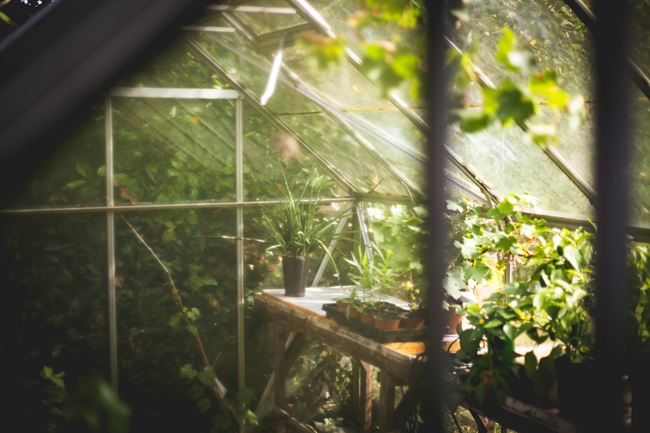
As winter approaches, many gardeners face the challenge of keeping outdoor plants alive through the colder months. Moving them into a greenhouse can offer a controlled environment that shields them from frost, extreme cold, and harsh winds, while providing adequate light and warmth for healthy growth. This article walks you through preparing your outdoor plants for a greenhouse transition, setting up the greenhouse, and maintaining your plants through the winter.
Step 1: Assess and Prepare Your Plants
Before moving plants indoors, it’s essential to assess which plants are best suited for overwintering in a greenhouse. Most commonly, perennials, tropical plants, and some hardy annuals do well in a greenhouse.
Check for Pests and Diseases
Inspect each plant for signs of pests, such as aphids, mites, or whiteflies, and any disease symptoms like mold or yellowing leaves. Treat any issues before moving the plants into the greenhouse to avoid infecting other plants in the enclosed space.
Prune and Trim
Lightly prune plants to remove dead or damaged leaves and stems. Pruning helps the plants focus on root and core strength through winter rather than new growth.
Adjust Watering Habits
As days grow shorter, reduce watering gradually. Many plants require less water in the winter months, so start reducing the water a few weeks before moving them into the greenhouse.
Step 2: Prepare the Greenhouse
A greenhouse offers protection from extreme weather, but you’ll need to ensure the environment is optimized for your plants’ specific needs.
Clean the Greenhouse
Clear out any debris, old soil, or dead plants from the greenhouse. Clean surfaces, windows, and shelves to reduce any lingering bacteria or mold that could spread to healthy plants. Disinfect tools and equipment to prevent introducing pests and diseases.
Check Temperature Controls
Greenhouses can become extremely cold at night in winter. Ensure your greenhouse has adequate insulation and, if necessary, install a space heater with a thermostat to keep temperatures stable, ideally between 45°F and 65°F for most plants. Using thermal blankets or bubble wrap insulation on the walls can help retain heat.
Set Up Humidity and Ventilation
While a greenhouse naturally holds moisture, it’s crucial to monitor humidity levels, as overly humid conditions encourage fungal growth. Ensure vents or fans are available to keep air circulating, which reduces mold and keeps plants healthy.
Position Grow Lights
During winter, natural sunlight is often insufficient, especially for light-loving plants. Supplemental grow lights can make a big difference in maintaining plant health and are especially helpful for greenhouses in areas with short winter days.
Step 3: Transition the Plants Gradually
Shifting plants abruptly from outdoors to a greenhouse environment can stress them. Instead, follow a gradual transition plan to help them adjust.
Acclimate Slowly
Begin by moving plants indoors for a few hours each day, gradually increasing the time over a week or so. This process helps plants adjust to the change in temperature and light levels.
Keep Similar Groupings Together
If possible, group plants with similar temperature, light, and humidity requirements together in the greenhouse. This makes it easier to care for each type and ensures they’re all in optimal condition.
Check the Soil
Before bringing each plant into the greenhouse, ensure the soil is well-drained and free from weeds. Plants that were growing in garden beds may need to be repotted in containers with fresh potting mix to thrive indoors through the winter.
Step 4: Maintain the Plants Through Winter
With your plants safely moved into the greenhouse, the goal shifts to maintaining them throughout the winter. This involves monitoring temperature, humidity, water, and general plant health.
Monitor Temperature and Light Daily
While heaters can maintain nighttime temperatures, monitor greenhouse conditions closely. On sunny days, temperatures may rise rapidly, so venting may be necessary. Use timers for grow lights to simulate natural day and night cycles if natural light is scarce.
Adjust Watering Based on Conditions
Winter plants typically need less water due to reduced light and slower growth. Check soil moisture regularly and water only when the top inch of soil feels dry. Overwatering can lead to root rot, especially in cooler winter conditions.
Inspect for Pests Weekly
Although greenhouses are a controlled environment, they can still attract pests, especially if some made their way in during the transition. Regularly inspect leaves, stems, and soil for signs of infestation, and take quick action if any issues arise.
Add Mulch to Soil
For added insulation and moisture retention, consider adding a thin layer of mulch to the soil surface around your plants. This will also help prevent water from evaporating too quickly and maintain a more stable root temperature.
Consider Fertilizer
Most plants require minimal fertilization during winter, as they’re not actively growing. However, some plants benefit from a diluted liquid fertilizer every 6-8 weeks. Make sure to research each plant’s needs before applying fertilizer, as over-fertilizing can harm them.
Key Tips for a Smooth Transition
Label Plants
If you’re moving a variety of plants into the greenhouse, consider labeling them with their name and any specific care requirements.
Monitor Regularly
Even if conditions seem stable, check on your plants often. Subtle changes in temperature or moisture can impact their health.
Stay Flexible
Each plant will respond differently to the greenhouse environment. Adjust conditions as necessary based on their appearance and overall health.
Transitioning outdoor plants to a greenhouse for winter can significantly enhance their chances of survival and keep them thriving until spring. By following these steps and paying close attention to environmental factors, your plants will stay healthy, allowing you to enjoy your green space year-round.



Comment here